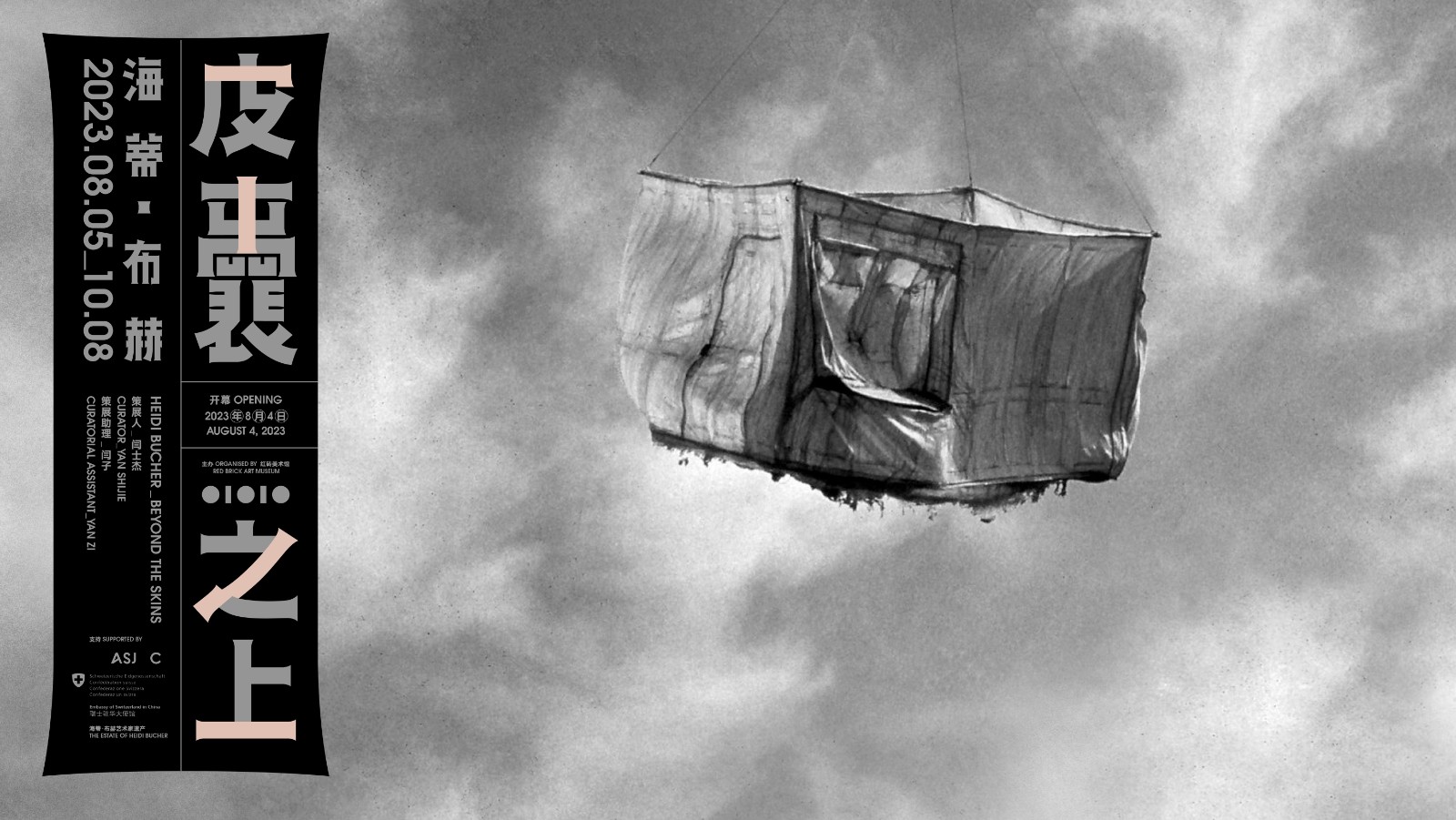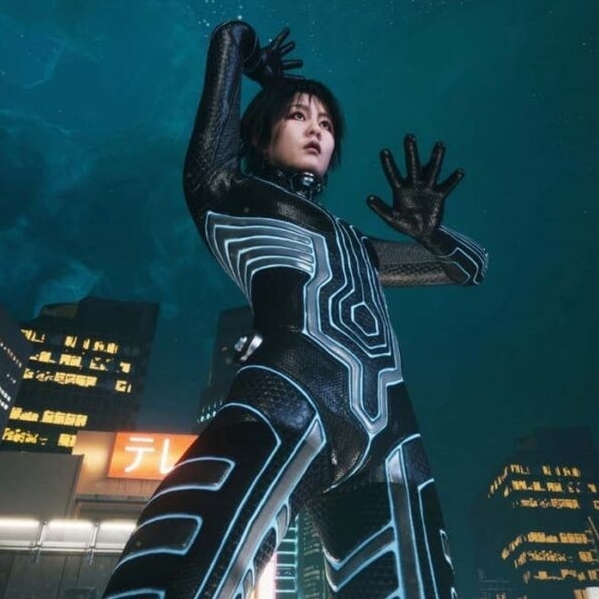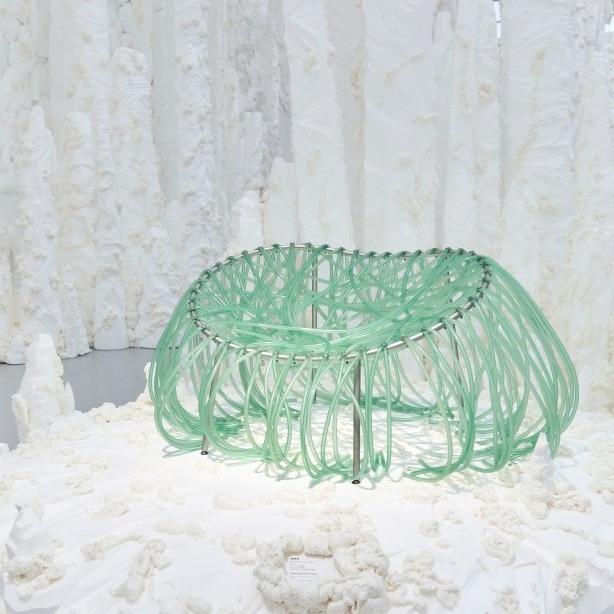
Red Brick Art Museum hosts a major retrospective exhibition entitled “Heidi Bucher: Beyond the Skins” on August 5th, featuring the avant-garde artist Heidi Bucher (1926-1993). Regarded as one of the most significant but widely overlooked artists of the 20th century, Heidi Bucher’s showcase is curated by Yan Shijie with assistance from Yan Zi. For the first time in China, this exhibition will present over 100 of her important works, including rediscovered and restored visual materials, early paintings on paper, abstract silk collages, wearable sculptures from her time in Los Angeles, her iconic “skinning” series that explores the relationship between architecture and the human body, and her later works created on Lanzarote Island. These transformative artworks delve into human psychology and spatial connections while also addressing important themes of gender, society, and politics that are central to her artistic expression.
In 1983, at the age of 57, Heidi Bucher set foot on Lanzarote, Spain, a volcanic island situated amid the vastness of the Atlantic Ocean. Surrounded by stretches of black lava and volcanic ash — “source of immersion and trust in the primal and the natural”, this has become the place where her finds inspiration.
In 1992, she created her final artwork, “La Vida El Muerte” (Life Death), using an old tree trunk to craft a cupboard. Inside were two sacks filled with volcanic ash, one labeled “Life” and the other “Death,” both signed with her initials “H.B.” Her son, Indigo Bucher, wondered, “Are these bags a ticket from her own life and death? Was she sending these to herself with the essence of life, using Picon (lava ash from Lanzarote) inside? ”
Gazing back at Heidi Bucher’s artistic journey, her true beginning can be traced back to 1972 when she showcased “Bodyshells” at Venice Beach in Los Angeles. This piece of artwork, along with “Bodywrappings,” denoted her first independent series after years of collaboration with her husband, Carl Bucher. This series continued the concept of “Landings to Wear,” which involved strolls on Manhattan streets and the transformation of static sculptures into dynamic, wearable, three-dimensional art. During that time, the United States was experiencing a vibrant wave of feminist movements. In Los Angeles, Judy Chicago and Miriam Schapiro founded the feminist art project “Woman House.” As a member, Heidi Bucher actively supported “Woman House” and participated in one of its exhibitions. Her time in Los Angeles undoubtedly laid the foundation for her future artistic endeavors.
In 1973, after returning from Los Angeles to Switzerland, where women had just attained suffrage rights in 1971, Heidi Bucher divorced her husband due to creative differences. She rented an underground, windowless cold storage room in Zurich and transformed the former butcher shop into her personal studio. The studio, known as “Borg,” marked the beginning of her independent artistic journey, separate from being someone’s wife or daughter. In this “safe” space of self-discovery, she embarked on her most groundbreaking creations.
Bucher invented a unique method where she directly “peeled” the interior of spaces like “skin” using latex, a process she dubbed “metamorphosis.” During this period, she also employed a mixture of latex and shells to preserve old clothing, creating a texture on the surface that resembled skin in both color and quality. These latex works exuded a distinctly feminine element, featuring items such as pillows, blankets, and even underwear and socks. They not only captured the wrinkles and folds of the garments but also preserved the personal history of their owners.
After her first spatial “skinning” work, “Borg” (1976), Heidi Bucher embarked on a series of architectural “skinnings” related to private domains, including her father’s “Gentlemen’s Study” (1978) and the “skinning” series of her parental home, which began in 1980. These works delved into a deeper exploration of power dynamics within the family. Bucher believed that the architectural spaces she inhabited and interacted with were not just composed of bricks and cement but also containers of gendered memories and experiences. As she “cleaned” away traces of the past in these rooms during the “skinning” process, it symbolized an imaginative detachment from the patriarchal family structure. Bucher viewed the physical exertion during this process as a form of spiritual liberation.
In the 1980s, Heidi Bucher’s “skinning” work expanded beyond private spaces to include public sites with collective historical memories. In 1983, Bucher conducted “skinning” and a performance at the former site of the Le Landeron women’s prison. In 1987, she performed “skinning” on the long-abandoned Grand H?tel Brissago, a place that had once been used to detain Jewish women and children during World War II.
In 1988, Heidi Bucher sought out an abandoned private psychiatric clinic once run for four generations by the Binswanger family, the Bellevue Sanatorium in Bad Kreuzlingen, on Lake Constance. Dr. Binswanger collaborated with the founder of psychoanalysis, Sigmund Freud, and co-published the book “Studies on Hysteria” (the term hysteria being derived from the Greek word hystera, which means uterus.) Throughout the early 20th century, psychiatrists attributed “hysteria” to women’s biological characteristics, leading to the violation of many women’s human rights. Curatorial Assistant Yan Zi described the floating artwork “The Parlour Office of Doctor Binswanger” as “a soul-like bodyshell, resembling a confession, an association about rituals, mourning and commemorating the countless persecuted women here, exposing and exhibiting their memories, liberating them from the shackles of the past…”
From her days as a student studying fashion design to becoming an artist, Bucher consistently transcended her era, both in her concepts and creations. Curator Yan Shijie stated, “‘Bodyshells’ marks the first step on Bucher’s path to self-liberation. Beginning with “skinning” her parental home, she attempted to break free from the constraints of the patriarchal and cultural norms of that time. The prison ‘skinning’ marked her entry into the realm of public spaces with political and historical significance. She decoded the power dynamics of knowledge production through her interpretation of the psychiatric clinic where “Studies on Hysteria” originated. By “skinning” the hotel where women and children were once incarcerated by the Nazis, she confronted collective historical oblivion. The “skins” she created became her embodiment.”
Curatorial Assistant Yan Zi remarked, “Heidi Bucher’s artworks are like energized fossils, narrating the memories and traces of an era, shifting people’s perceptions to the profound meanings beyond the material. As a significant artist of the 20th century who has been overlooked in mainstream art history narratives, Heidi Bucher’s works have withstood the test of time, eventually gaining recognition within the art world. They continue to thrive, seamlessly intertwining with the tapestry of time, leaving an indelible and profound impact…”
About the exhibition
Dates: 2023.08.05 - 2023.10.08
Curator: Yan Shijie
Curatorial Assistant: Yan Zi
Opening: August 4, 2023
Organised by: Red Brick Art Museum
Supported by:
The Estate of Heidi Bucher
Art Sonje Center
Embassy of Switzerland in China
Courtesy Red Brick Art Museum.




























